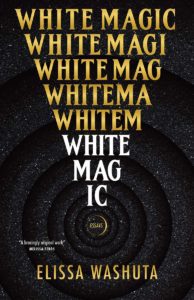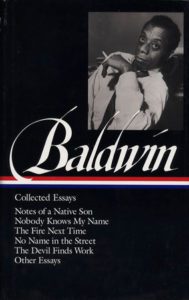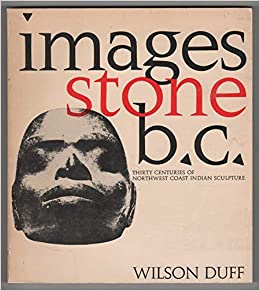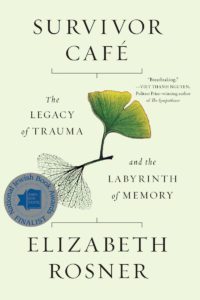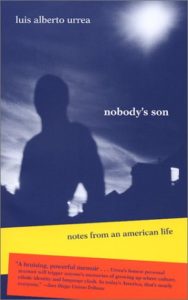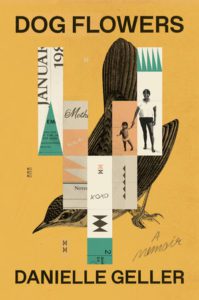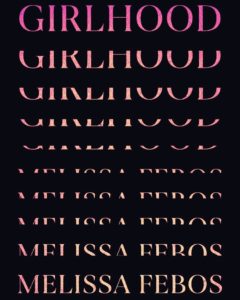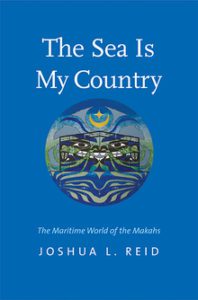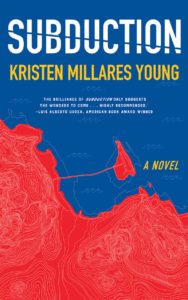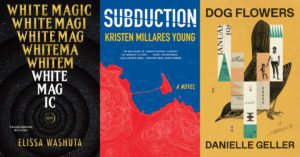
In these disunited states, containing within them many sovereign nations, we are in what Biodun Jeyifo called “arrested decolonization.” And yet, as Mukoma Wa Ngugi wrote, “The work of decolonization is as personal as it is political.” My debut novel, Subduction, flickers between the perspectives of two protagonists converging on the same community. Subduction opens with the anthropologist Claudia, a Chicana who doesn’t think of herself as such. Soon, she meets Peter, a Makah man who has spent most of his life seeking itinerant work, returning only to distrust the wisdom his mother Maggie wants to bequeath. True to the America of today, both of these protagonists have isolated themselves with their careers—Claudia as an academic, and Peter as an underwater welder.
To convey my intentions for Subduction is delicate, precarious. It begins like so: “The shore pulled away. Froth churned from its feet to hers. The engines hummed through her bones.” From the very first sentences, I wanted to establish Claudia as an unreliable narrator, someone who pins supposedly objective analyses on a changeable perspective. Hence the shore pulls away—an impossibility except for a woman who measures movement from where she stands on a ferry during the first leg of her journey “to the Makah reservation at Neah Bay, an old whaling village on the northwest tip of the lower 48.”
Immigrants to this nation become complicit settlers upon arrival, whether or not they perceive that truth. “Likewise, not all settlers are ‘white’—nor would they identify themselves as white,” writes Sandra Styres (Kanien’kehá:ka) in Indigenous and Decolonizing Studies in Education: Mapping the Long View. “It is not about who is whiteness but rather how whiteness is perpetuated and maintained through networks and relations of power and privilege within and across societies.” Fiction is a powerful prism for examining such fraught truths. Through my protagonists, I studied the lies we tell so we don’t have to change. “Journeying is a process of coming to know. It is essentially learning through the chaos of moving from the familiar through to the unfamiliar while maintaining and observing a reflective frame of mind,” Styres writes. “Journeying is a place where our stories intersect and become interconnected with other stories—layers upon layers.”
The list below contains works of memoir and scholarship aimed at unshackling minds so that readers can enact the structural transformation we wish to witness in the world. “Real change will happen only when settlers are forced into a reckoning of who they are, what they have done, and what they have inherited,” writes Taiaiake Alfred (Kanien’kehá:ka). “Then they will be unable to function as colonials and begin instead to engage other peoples as respectful human beings.”
***
White Magic and My Body Is a Book of Rules by Elissa Washuta (Cowlitz)
My Body Is a Book of Rules is the book that brought me to Red Hen Press. Washuta’s debut memoir crystalized her sharp, multifaceted focus on the ramifications of rape, the legacies of Catholicism, and the treatment of illness within her Indigenous body. In her forthcoming essay collection White Magic, Washuta turns to formal narrative structures excised from tarot cards, astrology, and Oregon Trail II to make sense of the repeated traumas of seeking love in a settler colonial state. It’s that last part—seeking love within a settler colonial state—that connects White Magic to Subduction, which as Shin Yu Pai writes in the Los Angeles Review of Books, “portrays the complex experience of racial grief that results from being severed from our cultural identities. It is messy to find human connection as a cultural outsider marred by the complexities of betrayal.” Raised in a New Jersey suburb across the country from her Cowlitz tribe, Washuta turned to the internet for spells to heal the wounds of her body and spirit. Decades later, her conjuring bore fruit. White Magic will be released by Tin House Books on April 27, 2021.
Collected Essays by James Baldwin
Despite his ruthless clarity about the ills of American society, whose foundational damage is forever being reenacted and undone, James Baldwin believed in the promise of humanity. In Nothing Personal, his magnificent collaboration with photographer Richard Avedon, a text from which I drew one of Subduction’s epigraphs, Baldwin writes, “Generations do not cease to be born, and we are responsible to them because we are the only witnesses they have.” Nothing Personal is so expensive and hard to find, despite a recent TASCHEN reissue, that I visited the special collections of the Seattle Public Library to hold its original grandeur. Luckily, we have Baldwin’s Collected Essays, which contain “The Creative Process,” an essay that kept me going during the long road to publication. “Societies never know it, but the war of an artist with his society is a lover’s war, and he does, at his best, what lovers do, which is to reveal the beloved to himself and, with that revelation, to make freedom real.”
Images, Stone, B.C.: Thirty Centuries of Northwest Coast Indian Sculpture by Wilson Duff
The other epigraph to Subduction quotes a poem by Wilson Duff, an archaeologist and anthropologist whose irrevocable and poetic longing to understand a culture that did not belong to him resulted in Images, Stone, B.C. “In the one hand, / you are holding the mirror. / On the other hand, / you are the mask. / Put on the mask and look in the mirror.” Duff revered Haida artist Charles Edenshaw so much that he would sometimes lecture as him, a highly problematic move I cite in Subduction: “‘Professor Wilson Duff isn’t here today,’ he told his students, and shortly thereafter, he made it true. A year after Images, Stone, BC was published, Duff killed himself, hoping to come back as a Haida artist like the carver he so admired—a brown man with blood ties to the culture Duff coveted.” Each sighting of Edenshaw’s work has helped me understand why Duff became obsessed with this master.
Survivor Café: The Legacy of Trauma and the Labyrinth of Memory by Elizabeth Rosner
For her understanding of the epigenetic inheritance of genocidal trauma, whether communicated through stories or held back, I return to Survivor Café again and again as both a reader and a teacher of creative nonfiction. Internationally acclaimed as a novelist, Elizabeth Rosner infused her memoir with lyric accuracy through a lifetime of interviewing Holocaust survivors like her parents. Linking their sufferings to those left by the Vietnam War, the bombings at Hiroshima and Nagasaki, the Cambodian killing fields, and other massive crimes against humanity, Rosner weaves revelation and research during repeated trips to Buchenwald, Germany with her father, who sat with Nazi descendants to forge a language of healing. I keep multiple copies of Survivor Café at home because I feel compelled to gift this canonical memoir to the smartest women in my life.
Nobody’s Son: Notes from an American Life by Luis Alberto Urrea
I can’t find my most recent copy of Luis Alberto Urrea’s memoir, which tells me that yet another friend holds it in keeping. I can’t blame them. For the pleasures and punishments of belonging to multiple cultures, Nobody’s Son is a master class in balancing pathos with humor. “Ouch. Did I really tell you all of that?” Born in Tijuana to a Mexican father, whom he lost to murder, and an American mother who wished for him to excise his Latinidad, Urrea describes growing up on both sides of a border which still divides children from their parents. In so doing, Urrea unveils his iteration of an “American identity” which Edward Said describes in Culture and Imperialism as “too varied to be a unitary and homogenous thing; indeed the battle between it is between advocates of a unitary identity and those who see the whole as a complex but not reductively unified one. All cultures are involved in one another; none is single and pure, all are hybrid, heterogeneous, extraordinarily differentiated and unmonolithic.”
Dog Flowers: A Memoir by Danielle Geller
I first encountered the work of Danielle Geller, a member of the Navajo Nation, in the anthology This Is the Place, where I read “Annotating the First Page of the First Navajo-English Dictionary,” her stunning essay later published by the New Yorker. In her memoir, Dog Flowers, forthcoming from One World Lit on January 21, 2021, Geller interrogates what happens when reciprocity is fractured between generations and across large swaths of time and land. After her mother dies from sicknesses of the settler colonial state—alcohol withdrawal and homelessness—Geller packs up the documents left by that foreshortened life and returns to the Navajo reservation. Combining archival images with deft and tender observations like those shown in her Paris Review essay, Geller coaxes readers into considering the cost of inheritance in the America of today.
Girlhood by Melissa Febos
In an observation with devastating implications, Louise Glück writes, “We look at the world but once, in childhood. The rest is memory.” What would it mean to see past the structures which formed us when we were too young to know what “malleable” meant? In Girlhood, an essay collection to be published by Bloomsbury on March 30, 2021, Melissa Febos brings lyric and merciless scrutiny to how women are conditioned to accept misogyny as their due. “My instinct was to blame myself, and I assumed they would too.” By drawing upon cultural materials for her kaleidoscopic investigation, Febos does for girlhood what Maggie Nelson did for pregnancy in The Argonauts. Let us unmake the patriarchy of our minds so that we may create a better way of being for those who arrive, blameless, to this sordid, hopeful place.
Voices of a Thousand People: The Makah Cultural and Research Center by Patricia Pierce Erikson, with Helma Ward and Kirk Wachendorf (Makah)
For their depiction of the problems of anthropological research among Makah tribal members, who rallied to found the Makah Cultural and Research Center as an Indigenous-led institution, I recommend Voices of a Thousand People. Its foreword was written by MCRC executive director Janine Ledford (Makah), who made me a whale meat fajita I won’t forget, one whose implications I explored in a Literary Hub essay about decolonizing research. “Indigeneity and working within Indigenous contexts is first and foremost about reciprocity and relationships,” writes Styres. “These relationships involve an acknowledgement and understanding of cultural positionalities and relations of place.”
The Sea Is My Country: The Maritime World of the Makahs by Joshua L. Reid (Snohomish)
In The Sea Is My Country, Joshua L. Reid, an associate professor of history and American Indian studies at the University of Washington, delivers historical and cultural accuracy through keen, empathetic scholarship. The book’s title refers to a famous quote by Makah chief Caqawix (tsuh-kah-wihtl), who told treaty negotiators, “I want the sea. That is my country.” Reid contextualizes tribal knowledge, political strategy, and cultural traditions, having spent years working with Makah elders and the Makah Cultural and Research Center in Neah Bay, which is currently closed to outsiders to protect their community from the pandemic. “Pacific worlds were first and foremost Indigenous spaces—and they remain so today in many places,” Reid wrote. Self-governed by different rules, these are a people for whom “[w]ords have power.”
And to close out this wonderful list, we just had to include Kristen’s new novel, Subduction, out now from Red Hen Press! – Ed.
Subduction by Kristen Millares Young
Fleeing the shattered remains of her marriage and treachery by her sister, a Latina anthropologist named Claudia takes refuge in Neah Bay, a Native whaling village on the jagged Pacific coast. Claudia yearns to lose herself to the songs of the tribe and the secrets of a spirited hoarder named Maggie. Instead, she stumbles into Maggie’s prodigal son Peter, who, spurred by his mother’s failing memory, has returned seeking answers to his father’s murder. Claudia helps Peter’s family convey a legacy delayed for decades by that death, but her presence, echoing centuries of fraught contact with indigenous peoples, brings lasting change and real damage. Through the ardent collision of Peter and Claudia, Subduction portrays not only their strange allegiance after grievous losses but also their shared hope of finding solace and community on the Makah Indian Reservation. An intimate tale of stunning betrayals, Subduction bears witness to the power of stories to disrupt—and to heal.

